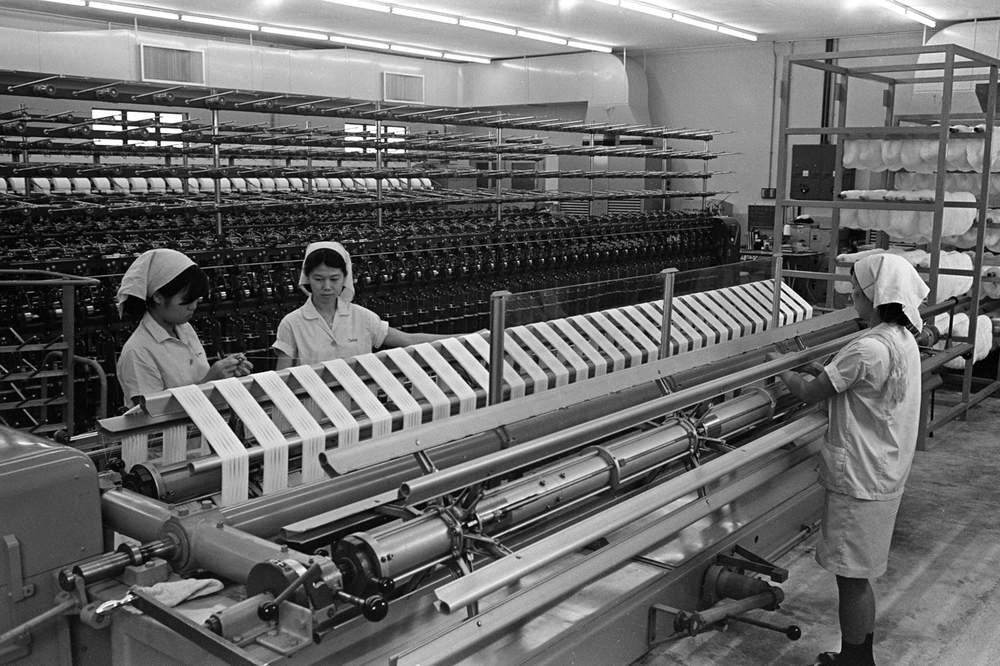The 1970s: Upgrading the Economy
Growing Our Economy
The 1970s: Upgrading the Economy
 (Image: Public Service Division)
(Image: Public Service Division)
Singapore successfully industrialised from the 1960s, leading to strong economic growth in the following years.
- Investment commitments between 1968 and 1973, primarily from the petroleum and electronics sectors, amounted to more than S$2.3 billion.
- Real GDP grew at an average rate of 13% annually from 1966 to 1973. This was one of the highest growth rates in the developing world.
-
The share of the economy occupied by manufacturing rose share of the economy also rose from 16.0% to 22.3% from 1966 to 1973.
- Employment in the manufacturing sector grew by more than 50% between 1966 and 1969, from 51,272 to about 87,128.
- Unemployment rate fell from 8.9% in 1966 to 4.5% in 1973. Thousands of Singaporeans enjoyed good jobs, better pay, and better quality of life.
Facing and Tackling a New Problem: Labour Shortage
However, the push to develop labour-intensive industries was so effective that by the 1970s, labour surplus turned into a labour shortage. This diminishing supply in turn caused labour costs to rise in Singapore.
At the same time, countries such as Indonesia and Malaysia were just firing up their industralisation plans. Their large labour force posed direct competition to Singapore, and hence we had to work through the 1970s to address our labour shortage.
In order to keep growing, Singapore had to adjust its economic strategy away from labour-intensive industries and into higher-value goods. This would ensure that Singapore’s workers continue to see a flow of jobs and income.
In 1973, then-Finance Minister Mr Hon Sui Sen announced a two-pronged approach to tackle the labour shortage in Singapore. One, attract new foreign investment in higher-value manufacturing, such as petrochemicals and precision engineering. Two, to upgrade and upskill workers across the economy in a bid to raise productivity.
1. To attract new higher-value industries to Singapore, the government provided tax incentives for targeted industries. One higher-value industry that grew rapidly during this period was the oil and petrochemical industry.
The oil industry has been in Singapore since the late 19th century, as we were a regional distribution centre for kerosene. It was only in the 1960s that oil majors started to invest big in Singapore. Between 1961 and 1973, four refineries were built and commissioned.
In his 1974 Budget statement, then-Finance Minister Hon said that the economic upgrading strategy had started to pay off, noting that total investment commitments in manufacturing jumped from S$336 million in 1972 to S$819 million in 1973. This was led by higher technology industries, such as petroleum and petrochemical products. So by the late 1970s, Singapore had became one of the largest refining centres in the world, with a capacity of more than 1.2 million barrels a day.
2. Investing in the people was another important aspect of growing the economy. In his speech to Parliament in 1970, then-Finance Minister Goh Keng Swee said that there was an urgent need to tackle a looming skills gap, which was going to negatively impact the economy by the mid-1970s. Singapore's economy needed engineers, highly skilled technicians and business management graduates to continue powering its growth.
Hence, there was a concerted effort to boost human resources, starting with strengthening our education system. Apart from that, we also focused on raising the productivity of workers, as part of overall efforts to overcome the disadvantage of having a small workforce. Although productivity growth was the economic plan from as early as the 1960s, the productivity policy was only formally launched in the 1970s. This culminated in Singapore’s first national productivity campaign, which was launched by then-Minister for Foreign Affairs S. Rajaratnam in 1975.
The economy performed well in the 1970s, with real GDP growing an average of 9.2% yearly between 1970 and 1980. With a strong manufacturing base and an increasingly educated workforce, the basic building blocks of Singapore’s modern city-state economy were put in place.

